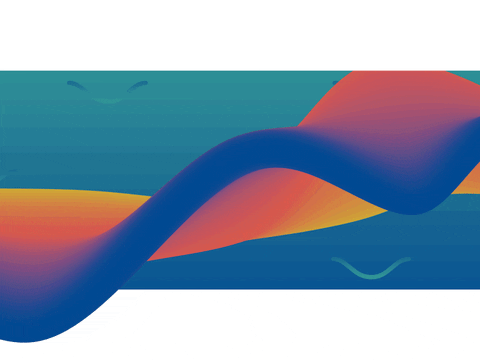Environment in human design comes from a piece of the human design chart called the Variables (aka, the arrows.) According to human design, we each have an optimal environment — a place where we often find the most flow and meet the least resistance.
Read on to learn about each of the 6 possible human design environments, and for examples of each environment sourced directly from our community. And if you don’t yet know your environment, you can look it up here.
Caves Environment
Caves is all about thriving in spaces that feel safe, protected and cozy, and where you feel secure and settled. What’s important is you have control over your space.
Examples include: a cozy bed, sitting in the corner of a restaurant rather than in the middle, your car, under a blanket, cozy coffee shops, forts, tents, coves, anywhere in your home where you can see the entrance, your own office where you can shut the door, somewhere you can have your back to the wall and look out over an expansive space, a library, a place with curtains, a bath, a sauna, a cozy reading nook with a view, a closet, being selective about who gets to be in your home.
Markets Environment
Markets is all about thriving in spaces where some kind of exchange is happening, e.g., in a business environment or around makers. You may find you’re closest to those you work with and you are highly selective about your spaces.
Examples include: collaborative spaces, creative spaces, farmers markets, online and offline learning platforms, spaces full of entrepreneurs and leaders, cafes, gatherings with people around your interests, arts fairs, instagram, grocery stores, curated weekend trips to your favorite cities, online and offline conferences, malls, cute downtown areas, gatherings with people that meet your standards.
Kitchens Environment
Kitchens is all about thriving in spaces where it feels like things are happening and where you can be at the center of the action. An ideal space feels creative and buzzy.
Examples include: coffee shops, working out of a cafe, being on set, the starbucks at a barnes and noble, party planning, hosting, craft groups, museums, hotel bars, vibrant cafes, beaches, a classroom around excited children, big city life, bartending, photographing a wedding, working at your kitchen table as people come and go, studios, multiple computer screens that feel like lots of action happening at once, co-working spaces, being part of an important conversation online.
Mountains Environment
Mountains is all about thriving in elevated spaces, i.e., spaces up high. Being up high allows you to see the big picture, clear your head, and recalibrate.
Examples include: a second floor bedroom with a view of the ocean, anywhere with an expansive view, tree house vibes, a place with high or vaulted ceilings, places with lots of air and free space, rock climbing, skydiving, the top of parking garages, airplanes, hotel rooms on high floors, roller coasters, being in the mountains with a majestic view, being on the top floor, the window seat on an airplane.
Valleys Environment
Valleys is all about thriving in spaces where you like the acoustics. It’s important that you like how it sounds in the space where you live. It’s also important to feel like you can access other people and information whenever you want.
Examples include: living in the forest with a cute town nearby, a place where you can hear the birds, being on the first floor of a spacious home, a place where you can hear the sound of horses, having a walkable coffee shop, narrow alleys, parks and cities with walkable areas, wide open spaces with open floor plans, an intimate conversation on an airplane.
Shores Environment
Shores is all about thriving on the edge, where one space transitions into another. It often feels good to have the tension of a different kind of space nearby.
Examples include: walking by the lake, living on the water, forest glades, living at the edge of a city, being near the river, porches, beach walks, wide open horizons, coastlines, being able to see multiple universes at once, seasons, sitting next to a window with natural light, sitting outside a restaurant, balconies, seeing where nature begins, having a table at the edge of a restaurant rather than in the middle, sunsets, sunrises.
—
… As you can see, our human design environments are not meant to be taken literally, i.e., having “caves” as your environment does not mean you must live in a cave. They don’t require that we live in a certain place; they simply reveal qualities to be aware of in any environment we’re in.
And as a reminder, the variables are never the first piece that I recommend people dive into; they are the most impactful to explore once you’ve been digging into human design for a while. But if your curiosity has been sparked and you’re excited to dig into all things variables, we offer a class all about the variables (which go far beyond just environment!) here.






















